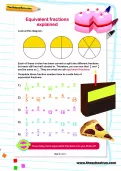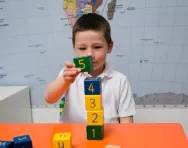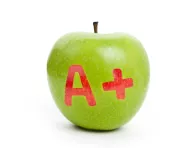Important update from TheSchoolRun
For the past 13 years, TheSchoolRun has been run by a small team of mums working from home, dedicated to providing quality educational resources to primary school parents. Unfortunately, rising supplier costs and falling revenue have made it impossible for us to continue operating, and we’ve had to make the difficult decision to close. The good news: We’ve arranged for another educational provider to take over many of our resources. These will be hosted on a new portal, where the content will be updated and expanded to support your child’s learning.
What this means for subscribers:
- Your subscription is still active, and for now, you can keep using the website as normal — just log in with your usual details to access all our articles and resources*.
- In a few months, all resources will move to the new portal. You’ll continue to have access there until your subscription ends. We’ll send you full details nearer the time.
- As a thank you for your support, we’ll also be sending you 16 primary school eBooks (worth £108.84) to download and keep.
A few changes to be aware of:
- The Learning Journey weekly email has ended, but your child’s plan will still be updated on your dashboard each Monday. Just log in to see the recommended worksheets.
- The 11+ weekly emails have now ended. We sent you all the remaining emails in the series at the end of March — please check your inbox (and spam folder) if you haven’t seen them. You can also follow the full programme here: 11+ Learning Journey.
If you have any questions, please contact us at [email protected]. Thank you for being part of our journey it’s been a privilege to support your family’s learning.
*If you need to reset your password, it will still work as usual. Please check your spam folder if the reset email doesn’t appear in your inbox.
Primary-school grading system explained for parents

Contents
How is children's progress measured?
How are children awarded a grade in no-levels grading system?
Teacher assessments at the end of KS2
When will your child be assessed?
Expected grades for each year group
Above or below the expected level
Teachers' view of the grading system
FAQs about primary school grading system
How is children's progress measured in primary school?
Until September 2014, children’s progress was assessed using national curriculum levels. The government then removed ‘level descriptors’ from the National Curriculum and schools now establish their own assessment systems to suit their children and parents.
The Department for Education felt levels were too vague and complicated for parents and not very good at helping them understand their child’s progress; there were also concerns that the levels system could contribute to children developing a "fixed mindset" about their ability and potential for growth. Until September 2014, grades were used in school to grade pupils from ages five to 14. At the age of 11, when children left primary school, they were expected to have achieved at least a Level 4 in English, maths and science.
How are children awarded a grade in the no-levels primary grading system?
In most schools teachers will use statements such as these to describe pupils' progress, as well as commenting on whether your child has made good progress over the year, giving details of curriculum areas where they have achieved well and areas that need more development and support. Examples of age-related expectations are:
- Working within the expected level of attainment for his/her age
- Working towards the expected level of attainment
- Working below the expected level of attainment
- Working beyond the expected level of attainment (at greater depth)
Bear in mind, however, that it is up to individual schools to decide how they assess pupils’ progress.


Boost your child's maths & English skills!
- Get a tailored learning plan for your child
- Resources & activities delivered each week
- Keep your child's learning on track
SATs results explained
Since summer 2016, more challenging SATs tests have reflected the new curriculum at the end of the Key Stages. Children now receive a scaled score instead of a level. Their raw score – the actual number of marks they accrue – will be translated into a scaled score; this helps to allow for differences in the difficulty of the tests from year to year so that pupils' results can be compared accurately.
For KS1 SATs (which are now optional) a score of 100 means the child is working at the expected standard, a score below 100 indicates that the child needs more support and a score of above 100 suggests the child is working at a higher level than expected for their age. The maximum score possible is 115, and the minimum is 85. You will be told whether your child has reached the national standard in their KS1 SATs as part of their end-of-KS1 report, but won't be given their test scores unless you ask for them.
Children are also be matched against ‘performance descriptors’ (in other words what pupils are expected to know and be able to do at the time of testing) when being assessed by their teachers in non-SATs subjects at the end of Key Stage 1 and 2 to see if they’ve achieved the expected standard.
In KS2, the papers are marked externally, with no teacher assessment involved. Each child receives a raw score (though you probably won't be given it as a parent), a scaled score, and confirmation of whether or not they achieved the national standard (‘NS’ means the expected standard was not achieved; ‘AS’ means the expected standard was achieved).
The range of scaled scores available for each KS2 test ranges from 80, the lowest possible scaled score, to 120, the highest possible scaled score.
A scaled score of 100 or more means that the child has met the expected standard in each KS2 SATs test; a scaled score of 99 or less means they haven't reached the government-expected standard.
Teacher assessments at the end of KS2
As well as receiving KS2 SATs results, at the end of Year 6 you will be told your child's teacher-assessment results for reading, writing, mathematics and science. The teacher-assessment result codes you can expect to see are:
- GDS: Working at greater depth within the expected standard (for writing assessment only)
- EXS: Working at the expected standard
- WTS: Working towards the expected standard (for writing assessment only)
- HNM: Has not met the expected standard (reading and maths assessment only)
- PKG: Pre-key stage, growing development of the expected standard (the child is working at a lower level than expected)
- PKF: Pre-key stage, foundations for the expected standard (the child is working at a significantly lower level than expected)
- BLW: The child is working below the pre-key stage standards (the lowest level of attainment)
- A: Awarded if the child was absent
- D: Awarded if the child is disapplied (has not been been tested at KS2 level)
When will your child be assessed?
Alongside continuous teacher assessments, there will still be national assessments at regular intervals in English primary education:
- Children take the Reception Baseline Assessment (RBA) in the first six weeks of Reception (though the RBA is not used to judge children individually, it’s a snapshot of the current ability level of their class as a whole)
- At the end of Reception, the EYFS Profile is a broad teacher assessment of your child’s abilities in all areas of their learning and development
- the Phonics Screening Check in Year 1
- the Year 4 Multiplication Tables Check
- It is possible they will have end-of-Key-Stage test in Year 2 (KS1 SATs), although this is now an optional test.
- the end-of-Key-Stage test in Year 6 (KS2 SATs)
What are the expected grades for the end of each year group?
Since 2016 the government has expected 85% of pupils to reach a ‘good level of attainment’ in updated Key Stage 2 SATs.
With levels abolished and the introduction of ‘performance descriptors’, there is less emphasis on expected grades for each year group, but rather a focus on whether a child has acquired the expected knowledge or not; the Department for Education has set the precise extent of progress required in each year group as age-related expectations for KS1 and age-related expectations for KS2.
What about children who are above or below the expected level?
Of course, there will still be children who will not meet the expected standard and they will continue to be teacher assessed using pre-key stage standards (a way of measuring the progress of children who are working below the national curriculum levels; the standards replace P-scales).
By assessing children more formally at Reception level (with the new Reception Baseline Assessment), the government hopes the children requiring more teacher input will be identified earlier.
In the past, the brightest Year 6 children could be entered for advanced SATs papers called Level 6 papers for English and maths. These tests are no longer offered; instead, all children take the same tests, but the papers include a number of more difficult questions that are intended to stretch higher-achieving children.
What is the general teachers' view of the non-levels system?
Understandably there is some genuine concern amongst teachers about the impact of scrapping levels. “I think many of us are worried about the potential inconsistency between schools with the government’s decision to scrap a system without anything really concrete to take its place,” says primary teacher Sarah Shillington. “Ironically I think parents have finally got to grips with levels when assessing their children’s attainment and yet now we’ll have to explain yet another set of rules.”
For a complete guide to the national curriculum levels (the previous grading system) read our explanatory notes for parents.
FAQs about the primary school grading system
Q: How are primary school students assessed?
Answer: Primary school children are assessed using a combination of teacher assessments, standardised tests and classroom work. Teachers regularly observe and evaluate students' progress in various subjects. In England, students also take standardised tests known as SATs (Standard Assessment Tests) at the end of Key Stage 2 (Year 6) to measure their attainment in core subjects like English and mathematics.
Q: What do the different grades or levels mean?
Answer: In the primary school system, grades or levels often refer to children's performance relative to expected standards for their age group. In England, the grading system uses terms like Working Towards the Expected Standard, Working at the Expected Standard and Working at Greater Depth. These indicate whether a student is below, meeting or exceeding the expected level of understanding and skills for their year group.
Q: How often will I receive updates on my child's progress?
Answer: Parents typically receive updates on their child's progress through regular report cards, parent-teacher meetings and occasional assessments. Schools usually provide written reports at least once or twice a year. Additionally, informal updates may be given through communication with teachers and at scheduled meetings.
Q: What should I do if my child is not meeting the expected standards?
Answer: If your child is not meeting the expected standards, it’s important to communicate with their teacher to understand the specific areas where they may need support. The teacher can provide insight into your child's strengths and weaknesses and suggest strategies or resources to help improve their performance.
5. How can I support my child's learning at home?
Answer: Supporting your child’s learning at home can involve several strategies:
- Create a quiet and organised study space.
- Establish a regular homework routine.
- Encourage reading by providing access to books and reading together.
- Practise basic math skills through everyday activities like cooking or shopping.
- Communicate regularly with your child’s teacher to stay informed about their progress and any areas needing attention.
- Use educational games and apps to make learning fun and engaging.








